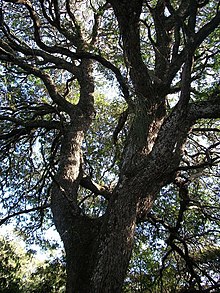|
Southern African Sand Forest
 Southern African Sand Forest is a sand forest, or a subtropical forest plant community of the tropical and subtropical dry broadleaf forests biome. It grows on ancient sand dunes in northern KwaZulu-Natal and southern Mozambique. In South Africa these forests are known simply as Sand Forest, while in Mozambique they are known as Licuati Forest.[1] The Southern African sand forest is part of the Maputaland coastal forest mosaic ecoregion. OriginsSand forests are thought to be relics of coastal dune forests, which have been separated from the ocean for more than a million years as the shoreline has shifted slowly eastwards over the millennia.[2] Dunes have accreted on the southeast African coastal plain since the Pliocene,[3] and frequent sand mobilization events during climatic changes have resulted in some reworking of the dunes.[4] The geological history of the region suggests that the current ecosystems here may be of recent derivation and many endemic plant taxa comply with the concept of neo-endemics (recent locally evolved species), and biological evolution (notably speciation) is still in an active phase.[1] Characteristics  Of the 225 Maputaland Centre plant endemic species, 30 are associated with sand forest and 20 are restricted to this vegetation type.[1] Species typical of moist forests, such as ferns and mosses are scarce, and the activities of termites appear to limit the accumulation of leaf litter.[5] Sand forest has a distinct boundary and also exhibits a narrow zone of 1–2 m of nearly bare soil directly bordering it.[1] There are indications that sand forest has allelopathic effects which may bring about this zone of inhibition and this aids in limiting fires spreading from the neighboring savannah into the forest; creating a unique environment for itself.[1] List of trees (Incomplete)
See alsoReferences
|